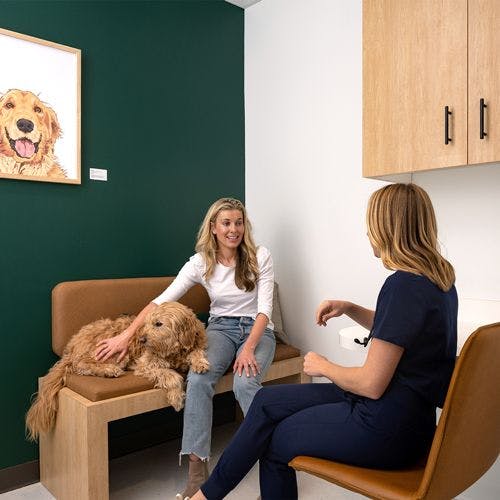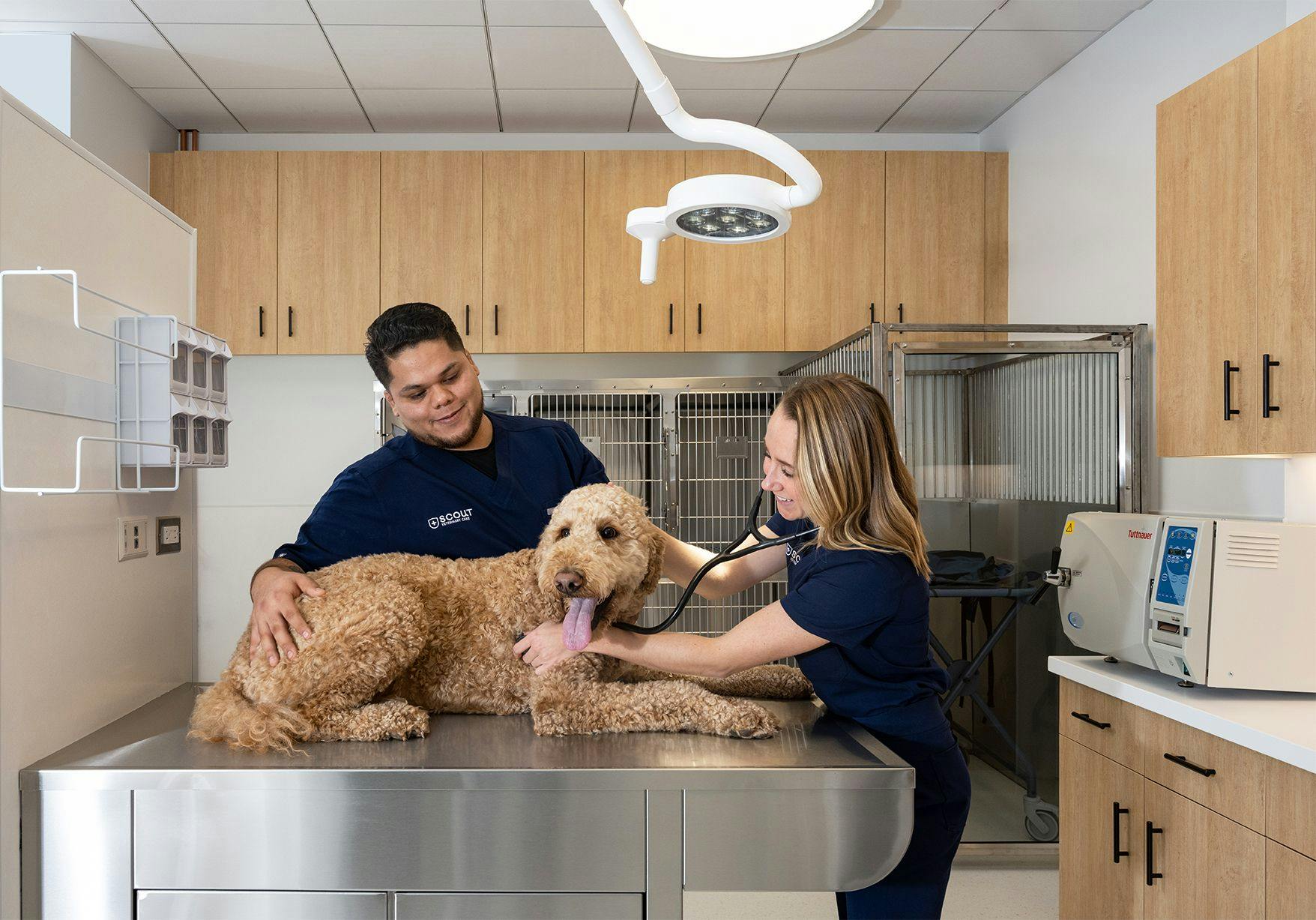We can help with...
Bumps & Lumps in Dogs & Cats


Hi there! We are sorry you are here but happy to help. Yikes! There is lump on your fur child, and you didn’t notice it until today. Finding a mass can induce a lot of anxiety and a google search is likely to spin out of control. So, what should you do? Here’s how to know if it needs to be addressed today.
What’s going on with your pet?
How would you characterize this mass? Here is a list of concerning findings:
- Hot and/or painful: a mass that comes on quickly that is also painful can be a sign of an infection or abscess.
- Ulcerated/bleeding/ruptured: a mass that ulcerates can be more irritating and get infected if left untreated.
- Did it just change in size dramatically? This could indicate a more active process and is worth getting checked out sooner than later.


Here’s what you can do at home...
Measure it. It might sound trivial but there is a lot of power in data. Measure the mass in 2 directions and keep these notes. When you do have it evaluated you will know exactly when you noticed it and how much it’s grown. There is no need to measure more than once a week unless there is an obvious change in size.
If it is ulcerated or bleeding and you can cover it with a clean item of clothing or light wrap, do that. If it is not in a location that is easy to cover or you need to apply the covering tightly, skip this step.

Does your pet need Urgent Care?
Probably not. However, if there is concern for infection or it is open/bleeding, definitely come on in.
What can you expect from your visit?
Cytology: If we had a microscope in our eyes we would tell you immediately what every mass was and how concerning it should be. Unfortunately, we don’t. That is where sampling comes in. The most common way to sample a mass is with a needle biopsy or FNA. Your Scout veterinarian will use a small needle to collect some cells to have analyzed. These results can take a few days to come back from the lab.
Treatments: Sometimes we need to get a better look at the mass or clean the area of it if appears infected. Your Scout veterinarian will clip the fur and clean the mass with an anti-septic solution. If the mass is painful, sedation may be needed to help keep your pet comfortable.
Topical treatments: Open or ulcerated masses are at risk for infection. Your Scout veterinarian may recommend bandages and/or topical medications.
Oral medications: There are some cases that might require pain medications or additional therapy that a pet will take orally.
The cone of shame: Ok we know, not what you want to hear. If your pet chews at the area or we place a bandage, and they chew the bandageit can make everything much worse.
Follow up appointments: Your Scout veterinarian will recommend followup appointments if the mass is infected or requires bandage changes. You can see Scout for these appointments or follow-up with your pet’s primary care veterinarian.
Referral: We hate to say it but sometimes your pet needs someone outside of Scout. If the results of the mass require further care, we help facilitate referral to specialty hospital in Chicago for ongoing management.
Remember that you are the best advocate for your pet. If you think it’s a problem, it probably is! We are here for you in your time of need.
Next available appointment in Chicago:
Old Orchard
Lincoln Park
2369 N. Lincoln Ave. Chicago, IL 60614
773-676-8166
OPEN 7 DAYS A WEEK 10A-8P
West Loop
112 N. May St. Chicago, IL 60607
773-676-2988
OPEN 7 DAYS A WEEK 10A-8P
Wheaton
1962 S. Naperville Rd. Wheaton, Il 60189
COMING SOON
COMING SOON!
See Scout today.
Book an appointment online up to 36 hours in advance.






